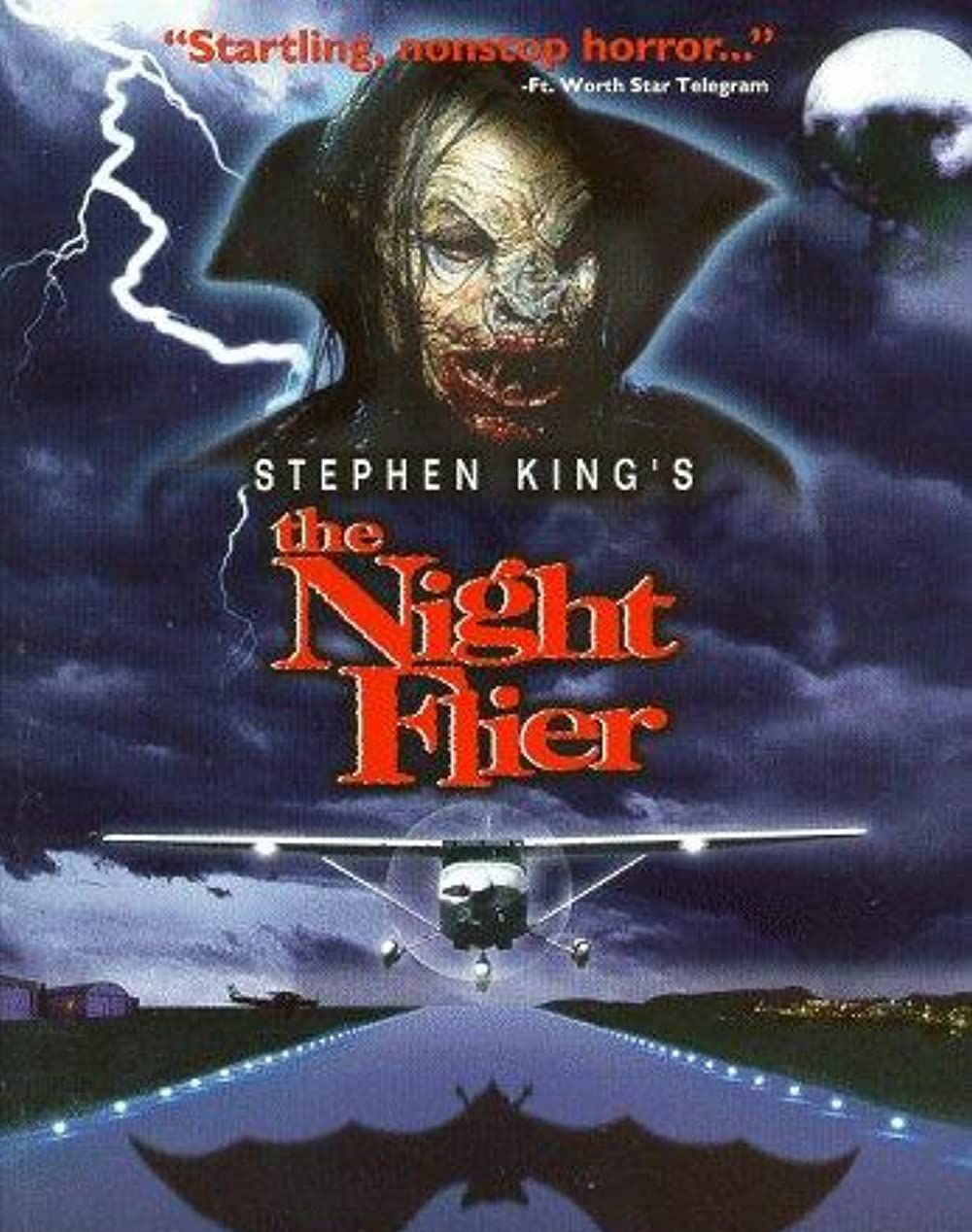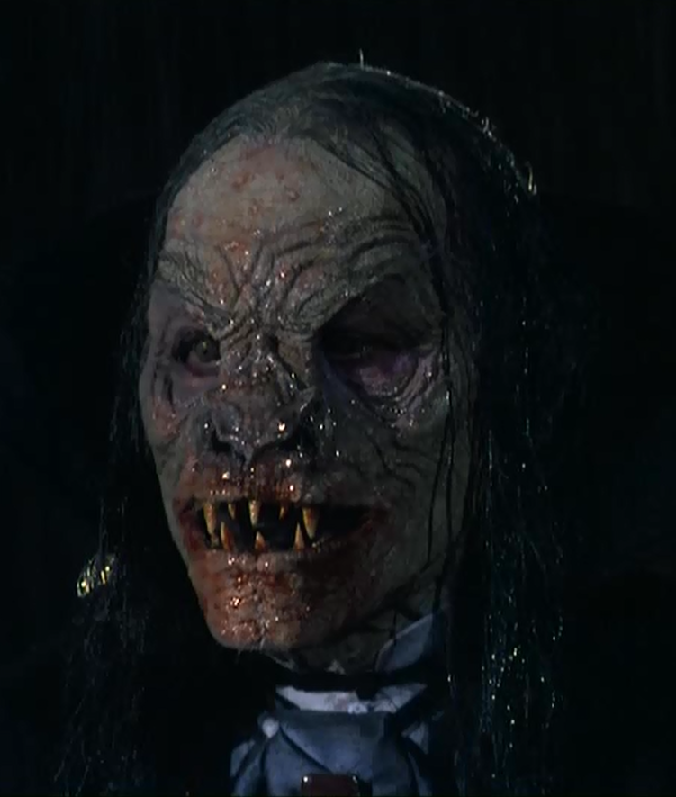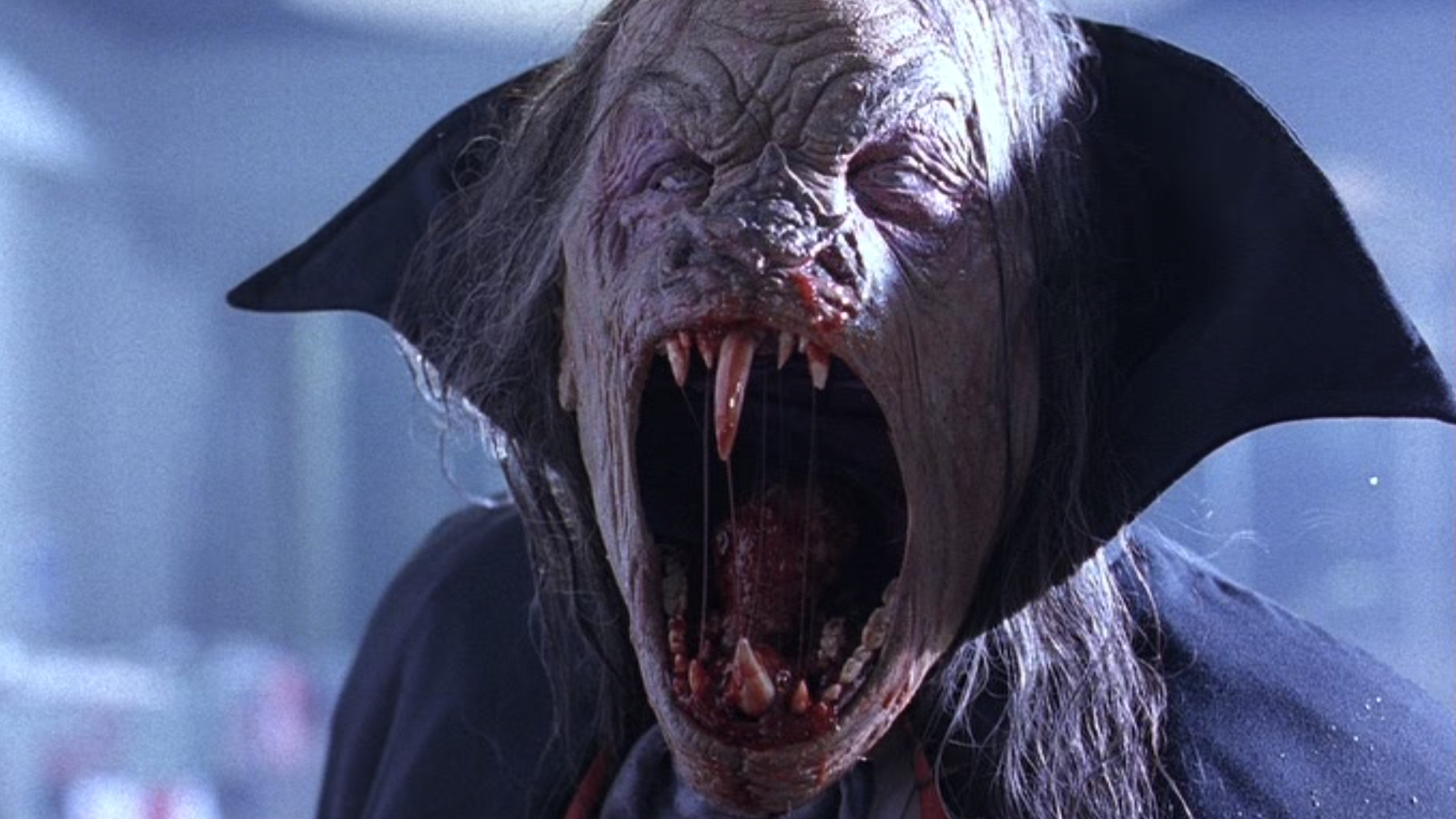This horror novel, adapted from Stephen King’s short story, follows a reporter as he pursues a story that may be one of his strongest works ever. A serial killer stalks secluded airports by private plane at night, possibly a creature that is not even human.
Vampires, rabid dogs, deranged killers, and pyromaniacs were all on the table, as were ghosts, telekinesis, and biological warfare in King’s writings.
There are hardly many vampires in Stephen King’s work. Aside from his vampire-centric Salem’s Lot, one of his best-known and best-loved stories is The Dark Tower, which also involves vampires. Mark Pavia adapted and directed The Night Flier, which was first published in Stephen King’s short tale collection Nightmares & Dreamscapes.
Evil has a flight plan – The Night Flier (1997)

Inside View’s ace reporter Richard Dees is given a new assignment. There is some sicko on the loose, calling himself Dwight Renfield, who is flying from one desolate airport to another, killing and drinking the blood of those who are there–and he has not yet been caught. Dees, however, sees this as a waste of time and suggests that Merton Morrison hand the assignment to cub reporter Katherine Blair.
In King’s The Dead Zone, Richard Dees is the reporter who attempts to interview John Smith. The different Dees bylines that Katherine reads are all references to other King stories, and Derry is also mentioned at one point.
Katherine is able to tap into a network of local law enforcement agencies on her computer the following morning and finds three cases that meet the batty flier’s MO, so Morrison asks Dees again to handle the case. Dees agrees this time. Katherine is clearly not pleased. Taking advantage of his own plane, Dees tracks the killer’s trail back.
Taking photos and piecing together the story as he goes, Dees follows the story through the backwaters of America. Its gloomy, moonlit airfields play a big part in most creepy scenes, and there’s a dog cameo that brings to mind Cujo to a degree. Despite the increased tension, even a vampire wearing a full Lugosi-like cape and looming out of the fog seems more like a matter of course than a bad idea at a Halloween party.
An interesting parallel exists between the metaphorically bloodthirsty journalists and the literally bloodthirsty vampire. The editor even says, “God, I hope he kills more people!” at one point. In this way, the film runs with black humor that is low-key.
The Night Flier is overtaken by Dees during a violent thunderstorm, and he quickly learns that he has misjudged his quarry: indeed, it is a vampire that is doing the killings. Dees is left horrified by the sight of the Night Flier who casually empties his bladder into an airplane urinal.
Dees drinks Renfield’s blood during his last encounter with him, causing a horrific hallucination. A pair of police officers command Dees to stop swinging blindly after he sees various dead bodies come back to life and attack him in the climactic hallucination. In the hallucination, he appears covered in blood and like he had slaughtered people. However, Dees is in a frenzy. When he runs at the cops, he is shot and killed.
Dees locked Katherine in a cupboard to ensure he got the story, just for her to pin all the murders on him and receive that career break she wanted. In a similar way to how vampires are born, bloodthirsty journalists, in turn, create more bloodthirsty journalists. In exchange for that front page, Katherine consumes Dees’ story and wrecks his reputation.
The film was shot in just thirty days by Mark Pavia, who actually completed it one day early. As a whole, the tight production schedule doesn’t come across on screen.
Despite being designed for theatrical release, The Night Flier premiered on HBO before hitting theaters a year later. However, it wasn’t a success at the box office. But, after all these years, the movie has become something of a cult classic. The story’s unusual framing and the monster design contributed greatly to its popularity.
The film stands out for its practical makeup effects done by incredible artists. The film contains numerous graphic images, including severed limbs, severed faces, and torn bodies. It’s pleasing to see that the camera doesn’t hesitate to show as much gore as possible, and the makeup holds up during the extended viewing time.
With its focus on a vampiric killer and the effects he has on his victims, the film gives off a nice creepiness. In one particularly chilling scene, a woman dressed in a peignoir waits on the steps of her house while the killer attacks and devours her husband. After that, she goes inside and welcomes the monster into the bedroom. When Miguel Ferrer is not onscreen, scenes like this have a dream-like quality that gives the film a much-needed boost.
Throughout cinema, it has always been true that interesting characters are more important than likable characters. The Night Flier certainly follows that path, with one of the more unsavory characters you’re likely to come across. It’s about as charming as a rattlesnake to deal with Richard Dees, an unpleasant, churlish prick who’ll do anything for a story.
Miguel Ferrer plays him so well that we can’t look away; his sleaze is captivating. It’s impossible not to track along for the duration of The Night Flier, even as he lies, cheats, and grimaces his way through it. He isn’t the worst character in the film, though, so he’s in a sense the unlikely hero in this story, for the lack of a better word.
A vampire who flies Cessna Skymaster is a wild enough concept to support a feature film. By focusing on Richard Dees’ moral downfall, time and attention are diverted from that storyline. In the same way, the transition of Dwight Renfield into a bloodsucker is symbolic of Richard’s transition into a different kind of vampire – one who feeds on other people’s pain and tragedy. In the absence of enough running time, neither story arc is as complete as it should be.
This is an interesting film, primarily because of Miguel Ferrer’s performance as slimy Richard Dees and for the scenes that feel like a tribute to Val Lewton’s visual storytelling skills. Even as it stands, it’s a fun, gory thriller.
Vampiric Serial Killer Dwight Renfield

Stephen King’s horror short story The Night Flier features a vampiric serial killer named Dwight Renfield.
It is unknown if Dwight Renfield is really his real name, as well as what his past was before his killing spree. Renfield flies a Cessna Skymaster 337, which is an indication that he was once a skilled pilot. The film shows Dwight carrying a photo album on his plane, which is full of photos of not only him but also someone who was possibly his wife before he became a vampire.
Both human and vampire versions of Dwight Renfield appear in the film. In both cases, he wears a black cloak similar to Bela Lugosi’s Dracula. The human form of Dwight is that of a handsome man with long, shoulder-length black hair and grayish eyes.
As he truly is, humanity is gone. His only human characteristic is his long, shoulder-length black hair. In addition to looking shriveled and wrinkled, his pale skin appears to be leathery in appearance. He has a horrifying mixture of human and bat-like physical characteristics on his face.
Having a bat-like head and a mouth filled with large fangs, his head’s form is especially unique among vampires in that he bears a massive fang on both the top and bottom parts of his mouth. This makes him a particularly dangerous predator. Dwight Renfield is exceptionally fast and agile, being a vampire. His fast movements barely register to the human eye in the film.
Two large holes on each side of the victim’s neck are the result of his feeding on his victims. Human-like in a warped sense, his hands are adorned with long fingers and razor-sharp claws, with hair growing from the back of each hand.
The fact that Dwight Renfield is a vampire makes it no surprise that he is sensitive to sunlight. Sun exposure is deadly to him, so he must rest in complete darkness during the daytime to avoid being exposed to the sun.
The film suggests that Dwight Renfield dislikes his status as a vampire and the murders he commits is because of his thirst for blood, despite his extremely brutal methods of feeding. Because his vampire curse prevents him from seeing himself in a mirror, he is often seen smashing any mirrors he comes across to avoid being reminded of the monster he has become.
Is There Going To Be A The Night Flier 2?

Stephen King’s The Night Flier is a highly underrated adaptation, and its canceled sequel almost explored the origin of its central vampire.
While the 1997 movie adaptation of The Night Flier largely follows King’s short, there are a few changes made to add enough material for a feature-length version, such as adding the character of a competing reporter named Katherine Blair. The Night Flier received bad reviews from critics and bombed at the box office, but it has since become a cult film, and if King had his way, it would’ve become a franchise.
The Night Flier had established a cult following by the mid-2000s. A sequel was on the way, and producer Richard P. Rubinstein recruited The Night Flier director and creator Mark Pavia to pen it. As a result, Rubinstein was very pleased with the result, and he sent it directly to King, who, contrary to his usual dislike for sequels to his work, was pleased with it as well. As a result, King joined Pavia in co-writing the script.
King and Pavia’s Night Flier 2: Fear of Flying was supposed to be a direct sequel to Night Flier. It focused on Katherine Blair and examines the origin of Dwight Renfield, a vampire who used an alias inspired by Dracula while traveling between airports.
Since Richard Dees’ character was killed at the end of the original Night Flier, he probably wouldn’t have appeared. It would seem that King’s involvement in the film would have been enough to get it made, but unfortunately, that was not the case.
Night Flier 2 was shopped around to different studios by Rubinstein, Pavia, and King, but no one was willing to finance the production, seeing it as a financial risk despite the relatively small budget necessary by Hollywood standards.
In today’s media environment, with the constant drive for original streaming content, Night Flier 2 would probably have received the green signal very quickly. The Night Flier sequel seems unlikely to ever be made, at least at this point.
